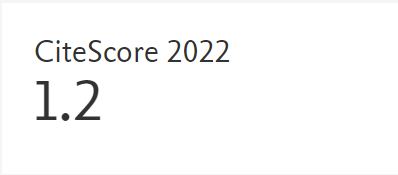Precipitación enzimática del cadmio utilizando bacterias nativas del género citrobacter.
Resumen
Se aislaron bacterias nativas del género Citrobacter, de aguas y suelos contaminados con metales pesados. La selección de los microorganismos se realizó con base en la actividad de la enzima fosfatasa, con lo cual se obtuvieron cepas de Citrobacter que cultivadas en batch, presentan hasta cinco veces más actividad enzimática que las cepas de cultivos de colección y las reportadas previamente. Los resultados de captura muestran que la remoción del cadmio se incrementa a través del tiempo de exposición de las células cuando éstas se encuentran en presencia del sustrato de la enzima, glicerol-2-fosfato. Al elevar el pH de la solución a valores entre 8-10 aumenta la afinidad de la enzima por el metal. La precipitación se da por la unión pasiva del cadmio a los sitios reactivos de la pared celular, y por la acumulación "in situ" del metal como fosfato insoluble sobre las células microbianas.
Referencias bibliográficas
Aickin, R.M. and Dean, A.C.R., 1977. "Leadacumulationby microorganism", Microbios Letters, 5:129-133.
Aickin, R. M, Cheetham, A. K. and Skarnulis, A. J., 1979. "Electron microscope studies on the uptake of lead", Microbios Letters, 9: 1 -15.
Analitycal Profile Index, API 20E., 1992. Enterobacteriaceae and other Gram negative bacteria, Biomérieux Vitek inc. USA, 10th edition.
Badillo German, J. E, 1988. "Cadmio", Curso Básico de Toxicología Ambiental, Albert Lilia, A.(ed), Mexico, Editorial Limusa: 145 -169.
Bio-rad laboratories, 1988. "Total Cellular Protein Determination Using the New DC Protein Assay", US/EG Bulletin 1770, California US A.
Carson, B. L., Ellis III, H. V, and Mccann, J. L., 1987. Toxicology and Biological Monitoring of Metals in Humans, Lewis Publishers, INC. 51-58.
Cobaleda, G. E., Pachón, Z., 1992. "Microscopía electrónica: principios y aplicaciones", Boletín Técnico del Instituto Colombiano del Petróleo, 5 (12).
Ehrlich, H. L., 1996. "Inorganic Hazardous Waste", in Biotechnology for the Treatment of Hazardous Waste, Boca Raton: Lewis Publisher/CRC Press: 45 -47.
EPA -Environmental Protección Agency, 1980. Ambient Water Quality Criteria for Cadmium, Springfield, VA: National Technical Information Service, PB81-117368.
Friedland, J., 1990. "The movement of metals through soils and ecosistems", Heavy Metal Tolerance in Plants: Evolutionary Aspects, Boca Raton, Florida: CRC Press: 8-17.
Hambling S. G, Macaskie, L. E., and Dean, A.C.R, 1987. "Phosphatase synthesis in a Citrobacter sp. growing in continuous culture", Journal of General Microbiology, 133: 2.743-2.749. https://doi.org/10.1099/00221287-133-10-2743
Hinchee, R E., Means, J. L. and Burris, D. R, 1995. Bioremediation of Inorganics, Battelle Press: 1-16.
Macaskie, L. E., 1990. "An immobilized cell bioprocess for the removal of heavy metals from aqueous flows", J. Chem. Tech. Biotechol, 49: 357 -379. https://doi.org/10.1002/jctb.280490408
Macaskie, L. E., and Dean, A.C.R., 1982. "Cadmium accumulation by microorganism", Environmental Technology Letters, 3: 49 -56. https://doi.org/10.1080/09593338209384097
Macaskie, L. E. and Dean, A. C. R, 1984a. "Cadmium accumulation by a Citrobacter sp", Journal of General Microbiology, 130: 53-62. https://doi.org/10.1099/00221287-130-1-53
Macaskie, L. E. and Dean, A. C. R, 1984b. "Heavy metal accumulation by inmovilized cells of a Citrobacter sp", Biotechnology Letters, 6 (2): 71 -76. https://doi.org/10.1007/BF00127292
Macaskie, L. E., Dean, A. C. R, Cheetham, A. K., Jakeman, R. J. and Skarnulis, A. J., 1987. "Cadmium accumulation by a Citrobacter sp.the chemical nature of the accumulated metal precipitate and its location on the bacterial cells", Journal of General Microbiology, 133: 539-544. https://doi.org/10.1099/00221287-133-3-539
Macaskie, L. E., Hewitt, C. J., Shearer, J. A. and Kent C. A., 1995. "Biomass production for the removal of heavy metals from aqueous solutions at low pH using growth decoupled cells of a Citrobacter sp.", International Bio deterioration and Bio degradation: 73 -92. https://doi.org/10.1016/0964-8305(95)00050-F
Montgomery, D.M., Dean, A.C.R, Wiffen, P., and Macaskie, L.E., 1995. "Phosphatase production and activity in Citrobacter freundii and a naturally occurring, heavy metal accumulating Citrobacter sp", Microbiology, 141: 2.433-2.441. https://doi.org/10.1099/13500872-141-10-2433
NIOSH.,Natl. Inst. Occupational Safety and Health. "Criteria for a Recommended Standard. Occupational exposure to Cadmium", Washington, D.C: US. Government Printing Office, HEW Publication No (NIOSH): 76 -192.
Perkin Elmer Corporation, 1992. Condición estándar para absorción atómica: 48 -49.
Plunkett, E. R., 1978. Enciclopedia de la química industrial, Manual de Toxicología Industrial, Bilbao, Ediciones Urmo, Tomo 12:125-127.
Volesky, B., 1990. "Biosorption and Biosorbents", Biosorption of Heavy Metals, Boca Raton CRC Press: 3-20.
Descargas
Derechos de autor 1997 Creative Commons Reconocimiento-NoComercial-CompartirIgual 4.0.

Esta obra está bajo una licencia internacional Creative Commons Atribución-NoComercial-CompartirIgual 4.0.












